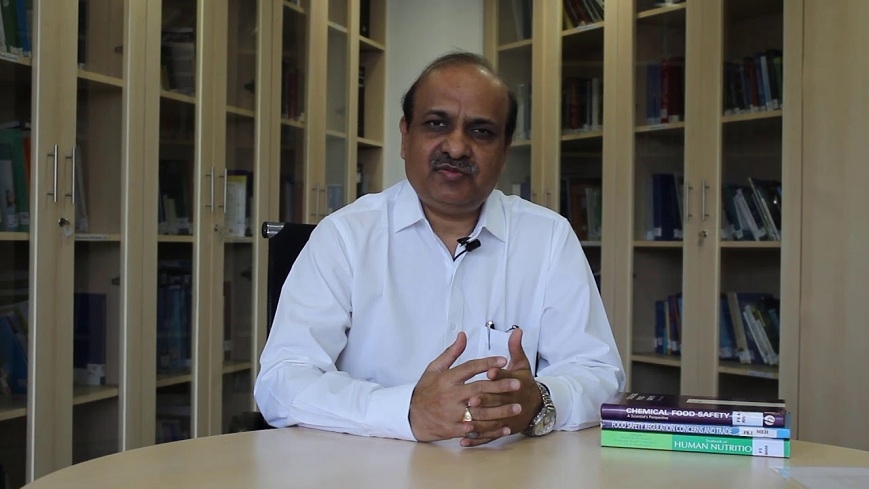‘COVID-19 has highlighted resilience of Indian public health ecosystem’
| Date :25-Nov-2020 |

Prof Sanjay Zodpey
By Kartik Lokhande :
WHEN one speaks to a scientist of the eminence of Prof Sanjay Zodpey, obviously one seeks to get explanation to technical terms for the benefit of general public. In the prevailing situation, several scientific terms viz. ‘R’ value, secondary attack rate (SAR), protocols are being discussed widely with specific reference to COVID-19. Prof Sanjay Zodpey, Vice-President, Public Health Foundation of India (PHFI), New Delhi, and also Director at Indian Institute of Public Health, Delhi, responded to the questions posed by ‘The Hitavada’ in this regard, and also shed light on what he called ‘resilience’ of Indian public health ecosystem.
Here are excerpts:
Q. Of late, ‘R Value’ is being considered to get a picture of transmission of COVID-19 infection. Can you please elaborate on what is ‘R Value’ and how is it interpreted?
A. ‘R0’ is the basic reproduction number of a disease, and indicates the average number of people an infectious person can directly infect in a population. It is a fundamental determinant of the dynamics of infection at the population level. An epidemic can only occur if the reproduction number R is greater than one. Hence, it is useful to measure it, as it provides important information about the potential for disease transmission and the impact of disease control measures taken. It depends upon three core parameters -- contacts per unit time (between infected and susceptible individual), probability of successful contact (whether the transmission has occurred) and duration of infectiousness. As you can see population mixing drives the disease transmission whereas physical distancing, avoiding closed spaces and crowded places, use of masks and early testing and treatment prevents the disease spread.
Q. What is the ‘R Value’ for Nagpur city as well as Nagpur rural, and how does it compare with the value for Maharashtra and India?
A. The ‘R’ number is dynamic in nature and keeps on changing. It increases with increase in disease transmission because of population mixing and vice versa, which is reflected in detection of new COVID-19 positive cases, which you know is dependent on both individual’s willingness to get tested when he/she develops symptoms as well as on test sensitivity/specificity and testing capacity. All disease prevention and control measures are directed to prevent the new cases to keep R number below 1. Hence, I think, our focus should be more on generating awareness about the disease among the citizens and proper implementation of measures to prevent disease transmission such as using masks, avoiding closed spaces and crowded places, physical distancing, maintaining proper ventilation in places of work and early testing and isolation of cases and quarantine of contacts, rather than on R number.
Q. Is ‘R Value’ the most effective means of gauging transmission rate? If there are other methods too, please shed light on them in brief.
A. ‘R’ number is one of the measures to estimate disease transmission and is very comprehensive measure, but requires assumptions of random/homogenous population mixing and average transmissibility (no super spreaders events). Another method to measure disease transmission is secondary attack rate (SAR) which is defined as the proportion of susceptible individuals who have had contact with the primary case and go on to develop the disease as a consequence of this contact. But this is rarely used outside the research purposes because of several assumptions (such as all persons should be equally susceptible; and all cases should be symptomatic) and consequently have limitations.
Q. What do you think is the most significant impact of COVID-19 on research and surveillance in public health in India?
A. One of the most important dimensions that COVID-19 has really brought into the focus is resilience of Indian public health ecosystem. We have seen timely execution of several collaborative research projects on COVID-19 especially around development of diagnostics and their large scale implementation across the country which is clearly reflected in testing capacities. In addition, the whole work around pan India and state and district specific sero-surveillance studies which are providing critical information on trend and pattern of disease transmission to guide disease prevention and control measures. Additionally, we have also conducted some critical clinical trials to guide decision around treatment protocols. Also, you are aware about the vaccine development efforts that are currently happening in the country. Overall, our research and public health ecosystem has fared well under these unprecedented circumstances.
Q. The protocols set in the initial stages have evolved over the months. In your opinion, how can these protocols be improved further?
A. This (SARS-CoV-2) is a novel pathogen and so is the associated disease (COVID-19), its presentation, clinical course, and prognosis. For such a disease, we are still learning new things on a daily basis, about transmission dynamics, risk factors, diagnostic and treatment modalities, in such scenarios with availability of new information protocols related to disease presentation, disease diagnosis, treatment and other key dimension are required to be updated on timely basis, and we have been quick to update and widely disseminate these protocols in timely manner along with rapid scaling up of testing and treatment centres. (Concludes)